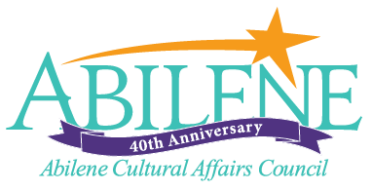Terry Cockerham: Big Bend

From the curator, Judy Tedford Deaton
Photographer Terry Cockerham laments the fact that many Texas residents have never experienced the majestic beauty of the Big Bend area of Texas. He is so adamant about the value of this part of the state that he has spent more than a decade documenting exactly why the Big Bend should be on everyone’s bucket list. The harsh environment of the Chisos mountain range and Chihuahuan Desert has long attracted photographers but few capture the beauty of the haunting landscape with the respect and reverence evident in Cockerham’s images.
This exhibition showcases Cockerham’s fascination with this unique part of the world. On his annual travels to Big Bend, Cockerham often returns to the same places. He has revisited the same rock formation near the central part of the park for years finding new perspectives on familiar sites transformed by weather, available light, changing seasons, and the passage time.
More than 20 photographs from trips focusing on the features created by climatic and geologic changes document Cockerham’s trips to photograph Big Bend. He begins his days at sunrise. The early morning light and late afternoon shadows are perfect for wide, landscape shots. Midday glare highlights details for close-up shots. Documenting the artist’s search for the one singular feature in the Big Bend landscape that reveals something unique, the photographs in this exhibition can be viewed as travelogue of Cockerham trips to the area between 2003 to 2014.
There is dramatic color in the desert, but Cockerham favors black and white photographs inspired by Ansel Adams’ 20th-century landscape photographs of Yosemite National Park. Adam’s famous zone-system monitors contrast in black and white photographs to expose the shadows and develop the highlights creating a timeless, intense version of reality. Cockerham also captures his subjects through the full range of black to white value scale creating a “more real” way of seeing.
Cockerham’s interest in photography began the early 1970s, when he bought a Nikon 35mm film camera while stationed on an US Army base in Germany. Several of the images on view were photographed on film. “I still prefer film for landscapes because of the quality,” Cockerham said “It captures so much detail.” In 2002 he also embraced the advantages of digital photography. He moved to Irving, Texas in 1978 where he launched his career as a commercial photographer and as a photojournalist, photography teacher and freelance photographer. For many years he worked as the staff photographer at Medical City Dallas Hospital.
In 2011 Cockerham gifted The Grace Museum 17 photographs and in 2022 Cockerham graciously offered the museum’s photography collection an additional 29 photographs from his well known Big Bend and Terlingua series many of which are featured in this exhibition. The Grace Museum is grateful for the opportunity to add these important photographs to the permanent collections and to share these outstanding images of the Texas landscape with our museum guests and patrons.

Artist Statement
When I finished my undergraduate degree in science in December 1971, I was immediately on my way to my first job as a second lieutenant in a 155SP artillery battalion in Europe. The good news is that 1) I had a job that was something I could relate to in that artillery is all about mathematics and that 2) I would get to travel all over Europe, something this Texas boy had not yet managed to do. Since I was going to have the opportunity to visit countries I had never been to, I decided it would be smart to buy a camera. I went to the PX (post exchange) and bought my first camera, a Nikon equipped with a 28mm lens. To be honest, I didn’t have a clue how to use the camera and, like so many people, I didn’t bother to read the manual that came along with that beautiful piece of 1971 camera technology.
After taking hundreds, if not thousands, of really awful photographs, I decided it was time to figure out how to make the best use of this device. Needless to say, I had already spent a lot of good money having bad images processed (I still have boxes of really bad photographs in my closet). That’s when I started reading everything I could get my hands on that had some relation to what the art of photography really was. I also learned how to process my own film by going to the base photography lab.
In 1975, I resigned my commission and immediately did two things. First, I got a job at a major film processing plant so that my film would be processed for free. The second thing I did was to go back to my alma mater and sign up for the arts program. I took drawing, painting, sculpture, photography, and art history classes. Art history was without a doubt the most beneficial of all the courses, especially the history of the Renaissance. I continued to read and study the work of photographers like Ansel Adams, Eugene Smith (my favorite), Minor White, Edward Weston and many, many others.
The Big Bend Project was begun during my first visit to the area in 2002 and has grown as a result of many annual, and sometimes biannual return trips. The Big Bend area appeals to me on a very basic and instinctual level and offers a much needed break from life in the city. I admire the honesty and the resilience of the people and the stark, desolate beauty of the land. I am fascinated by the history and traditions of this remote part of Texas, and I am saddened to notice the environmental changes which have occurred during my relationship with this landscape. I offer these images as a tribute to the nobility and majesty of this unique place.
Exhibitions Sponsors



